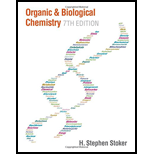
Organic And Biological Chemistry
7th Edition
ISBN: 9781305081079
Author: STOKER, H. Stephen (howard Stephen)
Publisher: Cengage Learning,
expand_more
expand_more
format_list_bulleted
Concept explainers
Textbook Question
Chapter 2, Problem 2.39EP
For each of the following pairs of
- a. 1-Hexene and 2-hexene
- b. 2-Methyl-1-pentene and 3-methyl-1-pentene
- c. 3-Hexene and 2-ethyl-1-butene
- d. 3-Methyl-2-pentene and 3-methyl-1-pentene
Expert Solution & Answer
Want to see the full answer?
Check out a sample textbook solution
Students have asked these similar questions
Indicate whether each statement is true or false.
Two generic isomers of pentane are n-pentane and neo-pentane.
Alkenes can have cis and trans isomers around the CC double bond.
Alkynes can have cis and trans isomers around CC triple bond.
Chapter 2 Solutions
Organic And Biological Chemistry
Ch. 2.1 - Prob. 1QQCh. 2.1 - Prob. 2QQCh. 2.1 - Prob. 3QQCh. 2.2 - Prob. 1QQCh. 2.2 - Prob. 2QQCh. 2.2 - Prob. 3QQCh. 2.2 - Prob. 4QQCh. 2.3 - Prob. 1QQCh. 2.3 - Prob. 2QQCh. 2.3 - Prob. 3QQ
Ch. 2.3 - Prob. 4QQCh. 2.4 - Prob. 1QQCh. 2.4 - Prob. 2QQCh. 2.5 - Prob. 1QQCh. 2.5 - Prob. 2QQCh. 2.5 - Prob. 3QQCh. 2.6 - Prob. 1QQCh. 2.6 - Prob. 2QQCh. 2.6 - Prob. 3QQCh. 2.7 - Prob. 1QQCh. 2.7 - Prob. 2QQCh. 2.7 - Prob. 3QQCh. 2.8 - Prob. 1QQCh. 2.8 - Prob. 2QQCh. 2.9 - Prob. 1QQCh. 2.9 - Prob. 2QQCh. 2.10 - Prob. 1QQCh. 2.10 - Prob. 2QQCh. 2.10 - Prob. 3QQCh. 2.10 - Prob. 4QQCh. 2.10 - Prob. 5QQCh. 2.11 - Prob. 1QQCh. 2.11 - Prob. 2QQCh. 2.11 - Prob. 3QQCh. 2.11 - Prob. 4QQCh. 2.11 - Prob. 5QQCh. 2.12 - Prob. 1QQCh. 2.12 - Prob. 2QQCh. 2.12 - Prob. 3QQCh. 2.12 - Prob. 4QQCh. 2.12 - Prob. 5QQCh. 2.13 - Prob. 1QQCh. 2.13 - Prob. 2QQCh. 2.13 - Prob. 3QQCh. 2.14 - Prob. 1QQCh. 2.14 - Prob. 2QQCh. 2.14 - Prob. 3QQCh. 2.14 - Prob. 4QQCh. 2.15 - Prob. 1QQCh. 2.15 - Prob. 2QQCh. 2.15 - Prob. 3QQCh. 2.15 - Prob. 4QQCh. 2.16 - Prob. 1QQCh. 2.16 - Prob. 2QQCh. 2 - Classify each of the following hydrocarbons as...Ch. 2 - Prob. 2.2EPCh. 2 - Prob. 2.3EPCh. 2 - Prob. 2.4EPCh. 2 - Prob. 2.5EPCh. 2 - Prob. 2.6EPCh. 2 - Prob. 2.7EPCh. 2 - Characterize the physical properties of saturated...Ch. 2 - Prob. 2.9EPCh. 2 - Prob. 2.10EPCh. 2 - Prob. 2.11EPCh. 2 - Prob. 2.12EPCh. 2 - Prob. 2.13EPCh. 2 - Prob. 2.14EPCh. 2 - What is the name of the spatial arrangement for...Ch. 2 - Prob. 2.16EPCh. 2 - Prob. 2.17EPCh. 2 - Prob. 2.18EPCh. 2 - Draw a condensed structural formula for each of...Ch. 2 - Prob. 2.20EPCh. 2 - The following names are incorrect by IUPAC rules....Ch. 2 - The following names are incorrect by IUPAC rules....Ch. 2 - Prob. 2.23EPCh. 2 - Draw a condensed structural formula for each of...Ch. 2 - Prob. 2.25EPCh. 2 - Classify each of the following compounds as...Ch. 2 - Prob. 2.27EPCh. 2 - How many hydrogen atoms are present in a molecule...Ch. 2 - Draw a line-angle structural formula for each of...Ch. 2 - Draw a line-angle structural formula for each of...Ch. 2 - Prob. 2.31EPCh. 2 - Prob. 2.32EPCh. 2 - Prob. 2.33EPCh. 2 - Prob. 2.34EPCh. 2 - Prob. 2.35EPCh. 2 - Prob. 2.36EPCh. 2 - Prob. 2.37EPCh. 2 - Prob. 2.38EPCh. 2 - For each of the following pairs of alkenes,...Ch. 2 - For each of the following pairs of alkenes,...Ch. 2 - Prob. 2.41EPCh. 2 - Prob. 2.42EPCh. 2 - Prob. 2.43EPCh. 2 - Prob. 2.44EPCh. 2 - Prob. 2.45EPCh. 2 - Prob. 2.46EPCh. 2 - For each molecule, indicate whether cistrans...Ch. 2 - Prob. 2.48EPCh. 2 - Prob. 2.49EPCh. 2 - Prob. 2.50EPCh. 2 - Draw a structural formula for each of the...Ch. 2 - Prob. 2.52EPCh. 2 - Prob. 2.53EPCh. 2 - For each of the following molecules, indicate...Ch. 2 - Prob. 2.55EPCh. 2 - Prob. 2.56EPCh. 2 - Prob. 2.57EPCh. 2 - Prob. 2.58EPCh. 2 - Prob. 2.59EPCh. 2 - How many isoprene units are present in a....Ch. 2 - Prob. 2.61EPCh. 2 - Indicate whether each of the following statements...Ch. 2 - Prob. 2.63EPCh. 2 - Prob. 2.64EPCh. 2 - Prob. 2.65EPCh. 2 - Prob. 2.66EPCh. 2 - Prob. 2.67EPCh. 2 - Prob. 2.68EPCh. 2 - Prob. 2.69EPCh. 2 - Prob. 2.70EPCh. 2 - Prob. 2.71EPCh. 2 - Prob. 2.72EPCh. 2 - Prob. 2.73EPCh. 2 - Prob. 2.74EPCh. 2 - Prob. 2.75EPCh. 2 - Prob. 2.76EPCh. 2 - Supply the structural formula of the product in...Ch. 2 - Prob. 2.78EPCh. 2 - Prob. 2.79EPCh. 2 - What reactant would you use to prepare each of the...Ch. 2 - Prob. 2.81EPCh. 2 - Prob. 2.82EPCh. 2 - Prob. 2.83EPCh. 2 - Prob. 2.84EPCh. 2 - Prob. 2.85EPCh. 2 - Prob. 2.86EPCh. 2 - Prob. 2.87EPCh. 2 - Prob. 2.88EPCh. 2 - Prob. 2.89EPCh. 2 - Prob. 2.90EPCh. 2 - Prob. 2.91EPCh. 2 - Prob. 2.92EPCh. 2 - Prob. 2.93EPCh. 2 - Prob. 2.94EPCh. 2 - Prob. 2.95EPCh. 2 - Prob. 2.96EPCh. 2 - Prob. 2.97EPCh. 2 - Prob. 2.98EPCh. 2 - Prob. 2.99EPCh. 2 - Prob. 2.100EPCh. 2 - Prob. 2.101EPCh. 2 - Prob. 2.102EPCh. 2 - Prob. 2.103EPCh. 2 - Prob. 2.104EPCh. 2 - Prob. 2.105EPCh. 2 - Prob. 2.106EPCh. 2 - Prob. 2.107EPCh. 2 - Prob. 2.108EPCh. 2 - Assign each of the compounds in Problem 13-107 an...Ch. 2 - Assign each of the compounds in Problem 13-108 an...Ch. 2 - Prob. 2.111EPCh. 2 - Prob. 2.112EPCh. 2 - Prob. 2.113EPCh. 2 - Prob. 2.114EPCh. 2 - Prob. 2.115EPCh. 2 - Prob. 2.116EPCh. 2 - Prob. 2.117EPCh. 2 - Prob. 2.118EPCh. 2 - Prob. 2.119EPCh. 2 - Prob. 2.120EPCh. 2 - Prob. 2.121EPCh. 2 - Prob. 2.122EPCh. 2 - Prob. 2.123EPCh. 2 - Prob. 2.124EPCh. 2 - Prob. 2.125EPCh. 2 - Prob. 2.126EPCh. 2 - Prob. 2.127EPCh. 2 - Prob. 2.128EPCh. 2 - Prob. 2.129EPCh. 2 - Prob. 2.130EP
Knowledge Booster
Learn more about
Need a deep-dive on the concept behind this application? Look no further. Learn more about this topic, chemistry and related others by exploring similar questions and additional content below.Similar questions
- How many of the numerous seven-carbon alkane constitutional isomers are continuous-chain alkanes?arrow_forwardOil spills along coastal shores can be disastrous to the environment. What physical and chemical properties of alkanes contribute to the consequences of an oil spill?arrow_forwardName each of the following alkanes. a. CH3CH2CH2CH2CH3 b. c.arrow_forward
- According to Table 2.10, five constitutional isomers are possible for alkanes with six carbon atoms. Write structural and condensed formulas for these isomers.arrow_forwardWhy are different conformations of an alkane not considered structural isomers?arrow_forwardWhat is the difference in bonding and in the general molecular formula between an alkene and an alkane with the same number of carbon atoms?arrow_forward
arrow_back_ios
arrow_forward_ios
Recommended textbooks for you
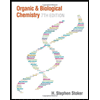 Organic And Biological ChemistryChemistryISBN:9781305081079Author:STOKER, H. Stephen (howard Stephen)Publisher:Cengage Learning,
Organic And Biological ChemistryChemistryISBN:9781305081079Author:STOKER, H. Stephen (howard Stephen)Publisher:Cengage Learning, General, Organic, and Biological ChemistryChemistryISBN:9781285853918Author:H. Stephen StokerPublisher:Cengage Learning
General, Organic, and Biological ChemistryChemistryISBN:9781285853918Author:H. Stephen StokerPublisher:Cengage Learning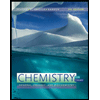 Chemistry for Today: General, Organic, and Bioche...ChemistryISBN:9781305960060Author:Spencer L. Seager, Michael R. Slabaugh, Maren S. HansenPublisher:Cengage Learning
Chemistry for Today: General, Organic, and Bioche...ChemistryISBN:9781305960060Author:Spencer L. Seager, Michael R. Slabaugh, Maren S. HansenPublisher:Cengage Learning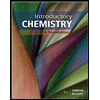 Introductory Chemistry: A FoundationChemistryISBN:9781337399425Author:Steven S. Zumdahl, Donald J. DeCostePublisher:Cengage Learning
Introductory Chemistry: A FoundationChemistryISBN:9781337399425Author:Steven S. Zumdahl, Donald J. DeCostePublisher:Cengage Learning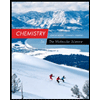 Chemistry: The Molecular ScienceChemistryISBN:9781285199047Author:John W. Moore, Conrad L. StanitskiPublisher:Cengage Learning
Chemistry: The Molecular ScienceChemistryISBN:9781285199047Author:John W. Moore, Conrad L. StanitskiPublisher:Cengage Learning

Organic And Biological Chemistry
Chemistry
ISBN:9781305081079
Author:STOKER, H. Stephen (howard Stephen)
Publisher:Cengage Learning,

General, Organic, and Biological Chemistry
Chemistry
ISBN:9781285853918
Author:H. Stephen Stoker
Publisher:Cengage Learning

Chemistry for Today: General, Organic, and Bioche...
Chemistry
ISBN:9781305960060
Author:Spencer L. Seager, Michael R. Slabaugh, Maren S. Hansen
Publisher:Cengage Learning


Introductory Chemistry: A Foundation
Chemistry
ISBN:9781337399425
Author:Steven S. Zumdahl, Donald J. DeCoste
Publisher:Cengage Learning

Chemistry: The Molecular Science
Chemistry
ISBN:9781285199047
Author:John W. Moore, Conrad L. Stanitski
Publisher:Cengage Learning
Chapter 4 Alkanes and Cycloalkanes Lesson 2; Author: Linda Hanson;https://www.youtube.com/watch?v=AL_CM_Btef4;License: Standard YouTube License, CC-BY
Chapter 4 Alkanes and Cycloalkanes Lesson 1; Author: Linda Hanson;https://www.youtube.com/watch?v=PPIa6EHJMJw;License: Standard Youtube License